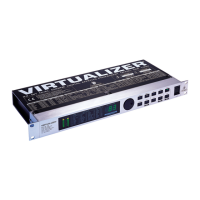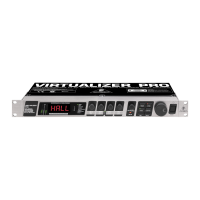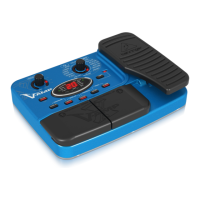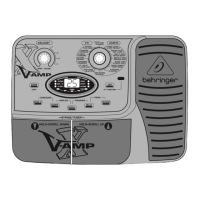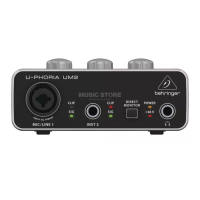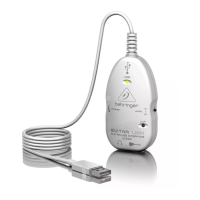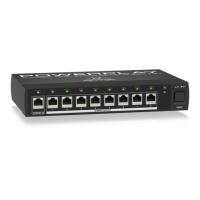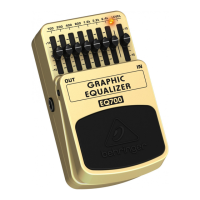Do you have a question about the Behringer VIRTUALIZER 3D FX2000 and is the answer not in the manual?
| input connectors | XLR and ¼" TRS |
|---|---|
| input impedance | 80 kΩ balanced |
| output connectors | XLR and ¼" TRS |
| voltage USA/Canada | 120 V~, 60 Hz |
|---|---|
| voltage Europe/U.K./Australia | 230 V~, 50 Hz |
| power consumption | 15 Watts max. |
| bandwidth | 20 Hz to 20 kHz, +/- 3 dB |
|---|---|
| SNR | 91 dB, unweighted, 20 Hz to 20 kHz |
| THD | 0.018 % typ. @ +4 dBu, 1 kHz, 0 dBu input, gain 1 |
| dimensions | 8.54 x 1.75 x 19.01" (217 x 44.5 x 483 mm) |
|---|---|
| net weight | 4.18 lbs / 1.9 kg |
Explains the BEHRINGER VIRTUALIZER 3D's design philosophy and high-quality components.
Provides essential pre-operation checks, handling advice, and safety precautions for the unit.
Details the process and benefits of registering your BEHRINGER product online for warranty service.
Details the front panel controls, including edit controls, jog wheel, and display.
Describes various reverb algorithms like Cathedral, Gold Plate, Small Hall, and their characteristics.
Details delay algorithms such as Stereo Delay, Tape Echo, and Ping Pong, explaining their parameters.
Explains modulation effects like Flanger, Chorus, Phaser, and pitch shifter effects.
Covers dynamic effects including Compressor/Limiter, Expander, and Gate, and their functions.
Explains psycho-acoustic effects like Exciter, Enhancer, Ultra Bass, and Stereo Imager.
Details filter and equalizer effects, including Parametric EQ and Graphic EQ.
Describes distortion effects and amplifier simulations like Vocal Distortion and Guitar Amp.
Details special effects such as Vinylizer, Sampler, Vocoder, Voice Canceler, and Resonator.
Explains multi-effects programs that combine different effects simultaneously.
Illustrates the signal flow and processing chain for various algorithm numbers.
Explains how to select and activate the 100 internal and 100 user presets.
Guides users on how to edit effect parameters using EDIT CONTROLS and the display.
Details the process of saving edited presets to the user memory banks.
Explains how to use the COMPARE function to audition original settings against edited ones.
Covers global adjustments like MIDI, input/output modes, and dual engine configuration.
Describes the procedure to reset the FX2000 to its original factory settings.
Provides guidance on setting correct input and output signal levels for optimal performance.
Explains how to connect and use the unit with a mixing console's aux send/return.
Details how to connect the FX2000 using channel or subgroup inserts for specific signal processing.
Shows how to integrate the unit into guitar racks and use MIDI for instrument control.
Explains how to incorporate the FX2000 into a MIDI setup using sequencers and controllers.
Describes how to save and load presets using System Exclusive (SysEx) data via MIDI.
Provides instructions for connecting the unit to the power supply and checking voltage settings.
Explains how to make balanced and unbalanced audio connections for optimal signal integrity.
Details the connections for MIDI IN, THRU, and OUT sockets using standard DIN connectors.
Explains how to switch between home recording and professional studio operating levels.
Provides a detailed table of all parameters for each effect algorithm with min/def/max values.
Details MIDI control numbers, transmitted/recognized messages, and controller value ranges.
